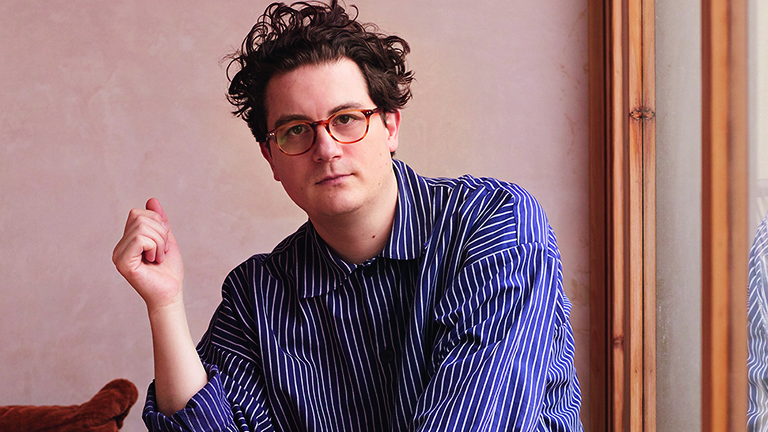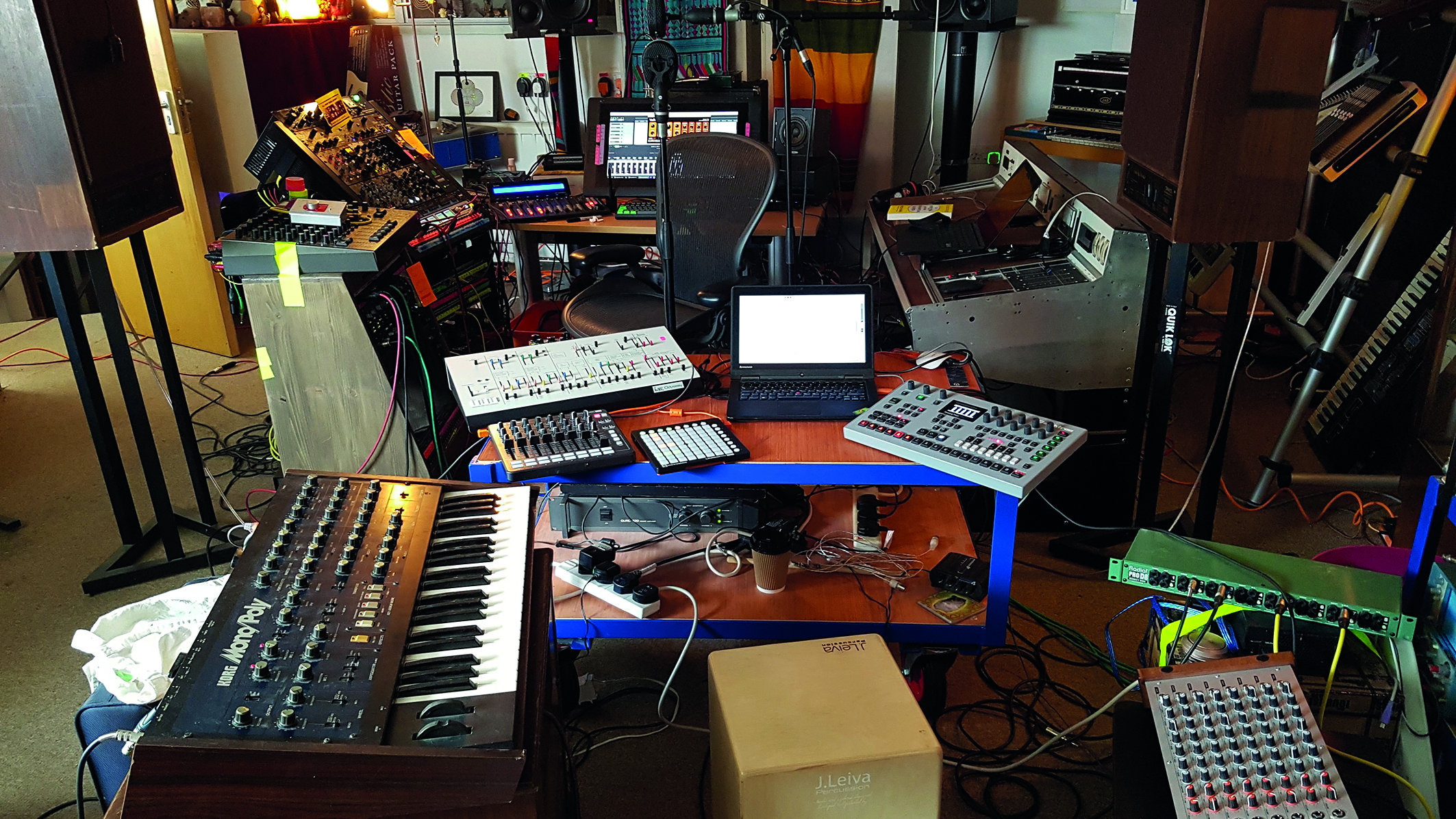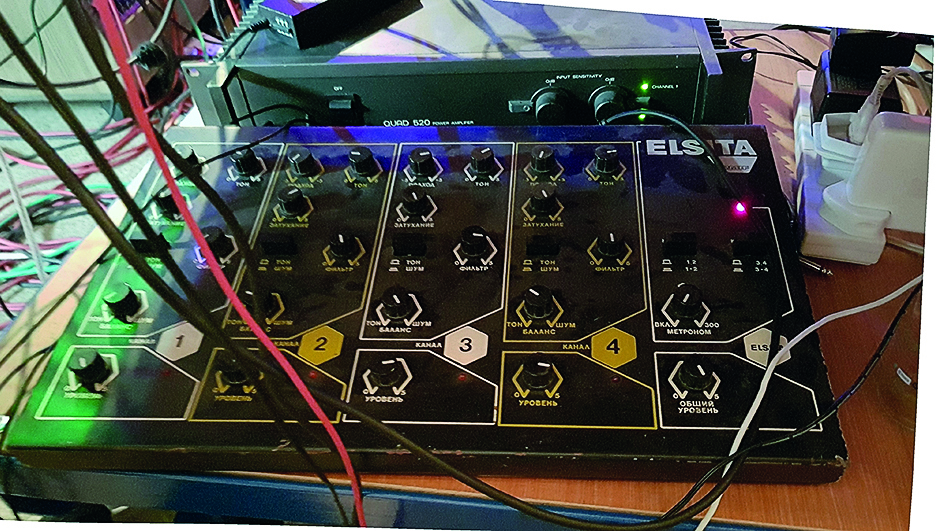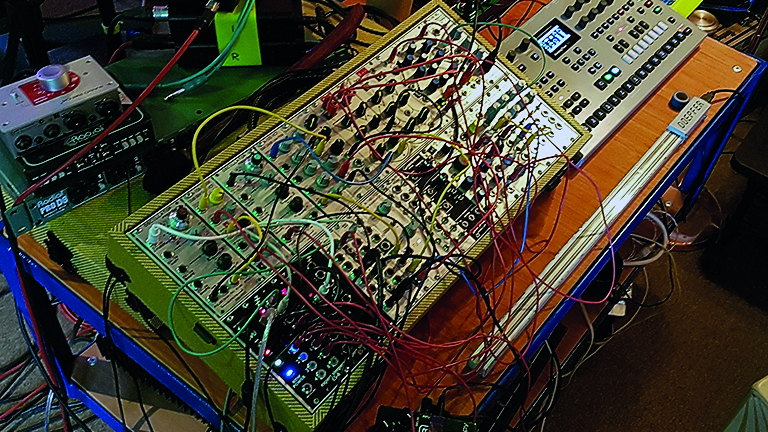Luke Abbott: "I’m not sure I can bring myself to spend three grand on a synth… You could get a new kitchen for that!”
Norfolk’s premier electronic explorer takes a sabbatical from his Szun Waves trio to offer up the rich, filmic textures of new album, Translate

Luke Abbott has a wealth of electronic experience in various guises. He's released music under his Earlham Mystics alias (with remixes for the likes of Jon Hopkins, Todd Terje and Nils Frahm), explored electronic jazz with the Szun Waves trio, and now has a brilliant new solo album Translate, as himself.
Engineered by long-time friend, collaborator and Border Community label boss, James Holden, Translate was recorded in three-day bursts at Holden’s spacious modular-laden west London recording complex, Sacred Walls. It’s an immersive and rewarding electronic journey through the musical impulses of a musician/producer who's always willing to explore new musical territories. We caught up with Luke to find out more.

Translate has a really cohesive feel to it. Is that due to the large gestation period?
“I think it comes down to two things, really. I made it quite quickly; there were 12 days of recording, which was also the writing period as I didn’t write anything before doing the recording and it was all done in situ. We did that over four sessions, one a month in James’s (Holden) studio in London. I’m based in Norwich, so I’d go down there, set up, stay there for two or three days and work on stuff to see what I came up with. I’d averaged out at about one good track a day, which is a fair hit rate.
"So, that’s probably part of why it feels cohesive because it was such a short period of time. The thing I think really links the tracks is that so much of the sound is the room sound. It all happened in the same space so there’s a sense of place about the record.”
Having witnessed James in his wonderful Aladdin’s cave, how do you begin when making gear choices?
“[Laughs] It is an Aladdin’s cave, isn’t it? I’ve done quite a few recording projects in there - we’ve done a lot of the Szun Waves recordings there - so I’m familiar with the studio, and James and I have been friends for such a long time now… we’re basically in an ongoing, decade-long conversation about writing music. So, we have quite a lot of shorthand with each other which makes it easy to communicate in that environment.
Want all the hottest music and gear news, reviews, deals, features and more, direct to your inbox? Sign up here.
“For the most part, I took down my own gear to use, though I did use a few of James’s things. I used his Korg Mono/Poly and his Elsita drum machine. We’d create different setups and try and write with a particular set of gear.
"In terms of making decisions, then, I guess that’s part of the joy of giving yourself the time pressure of going into a studio and saying, ‘I’m going to get something done in the next two days’. It forces you into making decisions.”
Quite handy when making electronic music can be an open-ended process?
“Yeah, I find that way, the classic paradigm of electronic music, where you make one part, add another and build it all up that way layer-by-layer… it’s a bit like Lego. I’m just not very good at that. I think I make much better decisions in the moment than I do if I’m given a chance to reflect. I’m much more interested in my instinctive reactions to things and more interested in trying to capture a performance than I am in trying to make really good decisions over a long period of time.”
So the ARP Odyssey and the Elektrons you brought down to the sessions with you?
“Yeah, those are all my things. I wasn’t using the sequencer on the Elektron as I can’t really get on with the sequencer but the synth engine I really, really like. It also has a few interesting and unique tricks I enjoy like the speed at which you can switch voices.
"The last track on the album, August Prism, is four different voices on the Elektron Analog Four being sent too much MIDI information so that it has to keep switching voices and they all keep coming out of different voice outputs and they’re being sent to different preamps. In the room they were coming out of different speakers as well, which gave it a really three-dimensional effect.
"That Analog Four is the piece of equipment that appears on every track on the record, everything else got switched around to some degree.”
Elektron are coming up with the goods in recent years, aren’t they?
“Yeah, I really like them as a company although I don’t find myself wanting to work in their workflow. The way their sequencers work is amazing and they’re excellent for certain styles of music but a lot of what I’m doing is trying to run away from the grid and try something a bit more improvisational. So, I have to approach the sequencing from a different angle but the actual sound engine of the Analog Four and the way it operates is fantastic.
"I had a SidStation years ago, which I think was the first thing they made. I loved that synth and I sold mine a few years ago and I’ve always regretted it!”
Seeing the Korg Mono/Poly in your setup triggered us for similar reasons!
“[Laughs] That’s James’s synth but I would love one of those. That’s one of the ones that Behringer are remaking but I’ve got absolutely no desire to get the remake as there is no way it will have any of the charm the original has.”
Cutting back to sequencing duties, what did you use for those?
“It was all done with Ableton and MaxMSP combined. Max devices that I’ve built and Ableton stuff working together.”

So, you share James’ passion for writing MaxMSP patches?
“Well, James has got an Oxford Maths degree so he can look at Max and know what’s going on, whereas it takes me a lot longer to do things! And I’m pretty sure my patches are much more rudimentary.
"Often what I’m trying to do is to make a really simple utility thing happen, so I manage to get out of it the kind of things I’m looking for. I didn’t build anything in Max for this recording session specifically, but I used all the Max plugins I’d written for performing the Szun Waves tracks. So, the Szun Waves stuff fed into the recording of this album quite heavily, I suppose.”
Do you take advantage of the community aspect of Ableton and Max for the sharing of patches and plugins?
“It’s amazing that people do that, and I’d definitely share what I did if I wasn’t so embarrassed about my poor programming! I actually think it would be too difficult to explain what the thing is supposed to do as they’re always part of a really particular workflow. I tend to get to a point where I think ‘I need to do this now and I need to build a thing to do it”… [laughs] So I then build a thing that’s of use only to me and only in one particular circumstance!”
Have you used Ableton for long?
“I’ve been using Ableton since Version 3.0 - before it had MIDI. I used to use Reaktor a lot as well and I’d build sequencers and synths in that. I’ve always been interested in making bespoke setups. Building instruments or a particular performance setup is like a kind of writing music. The things that come out of it you can take ownership of.”
Ableton is possibly the closest a DAW can come to that ‘being off grid’ you mentioned?
“Yeah, it’s a DAW that’s been designed from the ground up with electronic music production in mind. They’ve had the sense to include MaxMSP and they keep bringing out lots of amazing and useful utilities that extend the ways in which you can integrate it with different workflows.
"I really like CV Tools that they’ve got now. If you work in a modular environment it means it’s really fluid and seamless to go between that CV world and the computer.”
Are most of the beats on Translate coming from that lovely old Elsita and the Vermona DRM-1 drum machines?
“It’s pretty much only those two machines on the record. I didn’t know what I was going to do for these recording sessions, but I knew that in some way it was going to be a solo response to how I’ve been working in Szun Waves.
"One of the questions I had to ask myself was how I cope with drums because Larry (Pike) is such an amazing drummer and so much of the music comes from his sense of rhythm and how expressively he can play a drum kit. I just didn’t want to compete with that thing he does so I decided early on that if there was going to be drums then they’d be doing one beat the whole way through and they’d be tiny in the mix.
"A lot of electronic music is very much about drum sounds coming out of speakers and hitting you really hard but a lot of my favourite electronic records, like the early Cluster albums, if there are drums then they’re tiny and placed in the middle. So, I wanted to put the synths in the speaker and the drums in the room, make them small and just let them tick away in the background.”
The Elsita needs to be triggered by something else, doesn’t it?
“You can put drum pads into them, but I was triggering stuff from CV triggers coming out of Ableton via an Expert Sleepers module.
"The Elsita and the Vermona just sound great. That’s another thing that defines your music is the type of drum sounds you use. As much as I love those classic Roland drum machines, there are so many records that have been made with 808s and 909s that I’m not sure I could really take ownership over the sound of those machines.
"I’ve used the Vermona for a long time; I used it a lot on my first album as well. I really just like the sound of that one. The Elsita is just such a rude machine… it sounds ridiculous and just so much fun. [Laughs] It’s an absolute klonk machine! That, for me is perfect as it’s almost like ‘anti’ drums.”

Was there any point in the recording proceedings where you regretted not bringing any pre-programming to the sessions?
“Well, the first session we did I had brought a couple of starting points that I’d written… and they were both shit! They just sounded really unexciting, so I had a little bit of time left in the studio on the first day so just started fucking around to see what came out.
"I jammed out the track Ames Window, which was the first thing recorded for this record. It came from me putting myself into the same workflow that I’m in working with Szun Waves, which is we start making noise and see what happens. A lot of that is about using generative music techniques or just letting things run and trying to work on top of them… recording as you go and seeing what comes out.
"The take of Ames Window that’s on the album was just jammed out for ten minutes and thankfully James had recorded it. From that point on I thought 'fuck it… I’m just going to make things up'. James’s studio is a very nice place to write music and hanging out with him there engineering made it a lot easier to bounce back ideas and that helps an awful lot. Also, the act of taking myself to his studio for a few days is like a pilgrimage that puts me in the mindset of concentrating on writing. It sounds really stupid, but I found it invaluable.”
Any happy accidents from using some of that lovely old gear?
“[Laughs] The whole record! I suppose the things that I really enjoyed that I wasn’t expecting were things like having a drum kit behind me and just hitting a cymbal twice. I wasn’t expecting to hit anything with a stick and record it, but James has the whole room miked up so having the cymbal in the sound of the room on the record just somehow really worked. The two tracks where I used a guitar that James had lying around worked really well, too.”
Translate has a very filmic quality to it… Is that a direction you could see yourself going as a music composer?
“I’ve done a couple of film scores before but I’m not desperate to become a media composer because those guys work really, really hard on very tight budgets and a lot of the time they have to satisfy other people’s desires. I know people that do that at a more pro level than me and I don’t want to swap lives with them.
"At the same time, I love films and cinema and I like the idea of writing for visual imagery as well. So, if the right project came along, I’d love to do some more film score work, but it would have to be a horror movie or a sci-fi film… something I could get my teeth into that suits the kind of sounds that I want to make.”
“The Elsita is just such a rude machine… It’s an absolute klonk machine!”

Do you see yourself working in this improvisational way for future projects?
“I wouldn’t pretend to be that organised that I’d know what I wanted to do next. I definitely want to do more stuff at James’s studio. I’ve been talking to a couple of friends recently about setting up a sort of Krautrock band, like Can or something.
"In terms of what my next solo thing might be I don’t know as it just hasn’t occurred to me yet. I’ve been thinking of setting a studio up in my bedroom again. That’s how I started, and I quite like the idea of taking it back to that environment as it’s a strange, intimate place to make music. Making music in domestic spaces, having to keep it quiet and potentially working late into the night all really change your decision making. Maybe it’s lockdown that’s done it to me but I kind of want to be in a tiny cocoon.”
What about any new bits of gear you might fancy for your next project?
“I really want to buy a new polysynth and it should be easy because there are loads out there but for some reason I don’t really like any of them. I’ve been looking at all the Dave Smith/Sequential Circuits stuff and I tried out the Prophet-6 but something about it didn’t grab me. The sound of the Rev 2 is too brittle or something? I used to have a Tempest and I never got on with it because it always sounded a bit ‘broken’ in the top end.
"I listened to the Novation Peak but it sounds like a VST to me and I didn’t really get it. There’s something appealing about that MFB Synth Pro polysynth but I don’t know if I trust the build quality as I’ve heard lots of complaints about it.
"There are so many out there, yet I can’t decide on one. The Black Corporation’s Xerxes looks really nice but I’m not sure I can bring myself to spend three grand on a synth… You could get a new kitchen for that!”
Once this pandemic is over have you plans to take Translate out live at all?
“Well, that’s the plan but we’ll have to wait and see but I can’t wait to do live stuff again. Because of the way we recorded the record a lot of it is room sound and I had everything going out through multiple speakers in the room so there’s a natural sort of surround-sound quality to the way it was written.
"So, I’ve actually been recording live versions and mixing them in surround-sound with a speaker company in the hope that we can do some showcase installations where we can showcase the album in a surround-sound mix.
"As well as that, just do some regular gigs too. I really miss standing on stage next to a massive sound system making huge noises!”


Future Music is the number one magazine for today's producers. Packed with technique and technology we'll help you make great new music. All-access artist interviews, in-depth gear reviews, essential production tutorials and much more. Every marvellous monthly edition features reliable reviews of the latest and greatest hardware and software technology and techniques, unparalleled advice, in-depth interviews, sensational free samples and so much more to improve the experience and outcome of your music-making.
